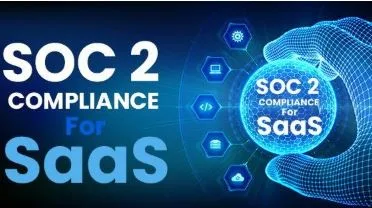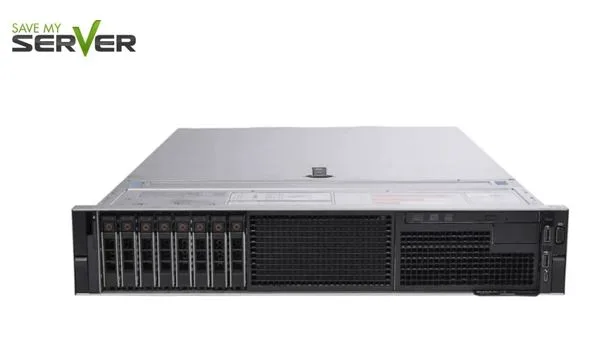Why SOC 2 Compliance is Essential for SaaS Companies
Software-as-a-Service (SaaS) has become the backbone of modern business. From project management tools to customer relationship platforms, SaaS companies manage enormous amounts of sensitive customer data every day. With that responsibility comes a critical question: Can customers trust you to protect their data?
The answer often lies in SOC 2 compliance. For SaaS providers, SOC 2 isn’t just another checkbox—it’s a competitive necessity. This article explores why SOC 2 matters for SaaS, how it connects to GRC compliance, and the benefits it brings to growing businesses.
What is SOC 2?
SOC 2 (System and Organization Controls 2) is a security compliance framework developed by the American Institute of Certified Public Accountants (AICPA). It assesses how organizations handle customer data based on five Trust Services Criteria (TSC):
- Security – Protecting against unauthorized access.
- Availability – Ensuring systems are operational and reliable.
- Processing Integrity – Delivering accurate and consistent services.
- Confidentiality – Safeguarding sensitive business information.
- Privacy – Managing personal data responsibly.
SOC 2 audits come in two forms:
- Type I – Evaluates whether your controls are properly designed at a specific point in time.
- Type II – Tests how effective those controls are over a period (often 6–12 months).
For SaaS companies, achieving SOC 2 Type II is often the gold standard—it shows that security isn’t just a claim, but an ongoing practice.
Why SOC 2 Compliance Matters for SaaS
1. Customer Trust and Retention
SaaS providers often store or process sensitive data—financial information, personal details, or proprietary business records. SOC 2 compliance demonstrates that your company has the policies and controls in place to protect that data, which builds customer confidence.
2. Enterprise Sales Opportunities
Many large organizations won’t even consider SaaS vendors that lack SOC 2. If your goal is to win enterprise clients, SOC 2 compliance often becomes a prerequisite for contracts.
3. Competitive Differentiation
The SaaS market is crowded. SOC 2 compliance sets you apart by signaling a higher level of professionalism, maturity, and commitment to security.
4. Reduced Risk of Breaches
Data breaches can lead to massive financial and reputational damage. SOC 2 controls—such as access management, encryption, and monitoring—reduce vulnerabilities and help detect threats before they escalate.
5. Regulatory Alignment
SOC 2 overlaps with many regulatory requirements (like GDPR or HIPAA). Achieving SOC 2 compliance can simplify meeting other compliance obligations.
The Role of GRC in SOC 2 Compliance
Pursuing SOC 2 without a clear strategy can feel overwhelming. That’s where GRC (Governance, Risk, and Compliance) comes in.
- Governance – Sets company-wide policies and accountability.
- Risk Management – Identifies and mitigates potential security threats.
- Compliance – Ensures ongoing adherence to SOC 2 requirements and other regulations.
With a strong GRC framework, SOC 2 compliance becomes less about scrambling before an audit and more about building sustainable, secure operations.
Steps for SaaS Companies to Achieve SOC 2
Step 1: Define Scope
Determine which Trust Services Criteria are most relevant. For SaaS, Security, Availability, and Confidentiality are usually essential.
Step 2: Conduct a Gap Analysis
Compare your existing controls with SOC 2 requirements. This highlights missing policies, weak security practices, or poor documentation.
Step 3: Implement Controls
Develop and enforce controls around access management, incident response, system monitoring, encryption, and vendor management.
Step 4: Adopt Continuous Monitoring
SOC 2 isn’t one-and-done. SaaS companies should use GRC tools to continuously monitor compliance and flag risks in real time.
Step 5: Prepare for Audit
A readiness assessment helps you confirm that controls are in place before undergoing the formal SOC 2 audit.
Step 6: Pass the SOC 2 Audit
An independent auditor reviews your systems, policies, and practices. With GRC in place, evidence collection and reporting become much easier.
Challenges SaaS Companies Face
SOC 2 compliance isn’t without hurdles. Common challenges include:
- Limited Resources – Startups often lack dedicated compliance staff.
- Documentation Overload – Auditors expect detailed, organized evidence.
- Employee Awareness – Without training, even strong controls can fail.
- Fast-Growing Teams – Scaling quickly introduces risks if policies don’t keep up.
- Vendor Dependencies – Many SaaS companies rely on third-party providers, which must also meet security standards.
Best Practices for SOC 2 in SaaS
- Automate Where Possible – Use compliance platforms to monitor controls, collect evidence, and simplify reporting.
- Start Early – Don’t wait until a customer demands SOC 2. Build compliance into your foundation.
- Train Your Staff – Every employee plays a role in data security. Awareness training is crucial.
- Align with Other Frameworks – If you need HIPAA or ISO 27001 down the road, integrate them with SOC 2 for efficiency.
- Work with Experts – Compliance consultants can accelerate the process and reduce costly mistakes.
The Business Impact of SOC 2 Compliance
For SaaS companies, SOC 2 compliance goes beyond meeting customer demands—it drives real business outcomes:
- Stronger Security Posture – Reduced risk of data breaches and downtime.
- Faster Sales Cycles – With SOC 2 reports ready, vendor security reviews move quicker.
- Market Expansion – Enables you to compete for enterprise and global clients.
- Cost Efficiency – Preventing breaches and avoiding compliance fines saves money long-term.
- Reputation Boost – Being SOC 2 compliant shows you prioritize customer data protection.
Final Thoughts
For SaaS companies, SOC 2 compliance isn’t optional anymore—it’s expected. Customers want assurance that their data is safe, and enterprise buyers often demand proof before signing contracts.
By pairing SOC 2 with a GRC compliance framework, SaaS providers not only achieve certification but also build scalable, sustainable practices that support long-term growth.
In a crowded SaaS market, trust is your most valuable asset. SOC 2 is how you prove it.



